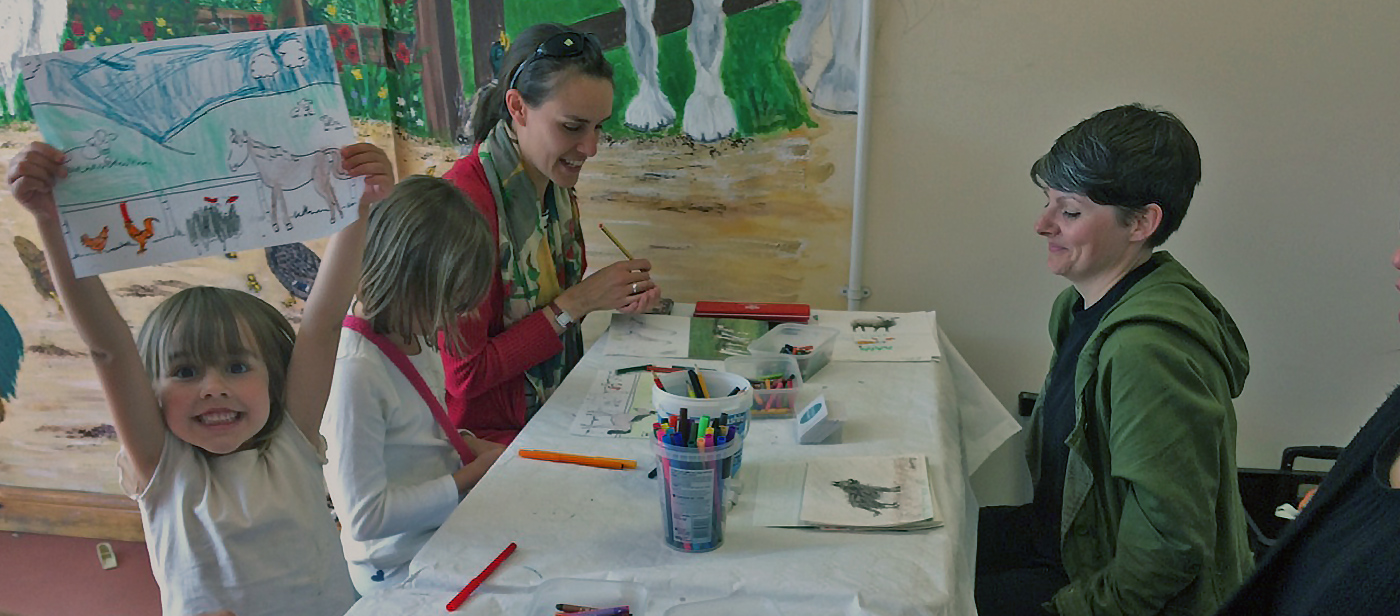Former Master of the Guild, Clive Wilmer, reflects on the history of Ruskin and Sheffield.
In Sheffield the name John Ruskin has the resonance of legend. His name seems to crop up everywhere. Places and institutions are named after him – Ruskin Park, Ruskin Hall, the Ruskin Building and – a notable presence in the city’s education – Ruskin Mill Trust. Quotations from Ruskin’s books appear in improbable places – in a baker’s shop, a fashion boutique, a wine bar and the grandest of Sheffield’s civic buildings, the Cutler’s Hall. Important figures in the history of the city as a centre of craft and industry knew Ruskin or learned from him: the geologist Henry Clifton Sorby, a key figure in the mass production of steel, was a correspondent, for instance, while Harry Brearley, the inventor of stainless steel, was a devotee of Ruskin’s books and ideas.
The Guild of St George has deep roots in Sheffield and owns the Ruskin Collection, now housed in its fifth home, the Millennium Gallery. As the current Master of the Guild, I am often asked questions that suggest the great man’s legendary status. Where, for instance did Ruskin live in Sheffield? Wasn’t he born in the city? I am always sorry to disappoint these questioners, especially as, to tell the truth, Ruskin’s acquaintance with Sheffield was very slight. He visited Sheffield on five or six occasions, one during his childhood, the others all in connection with the Guild.
Yet people are right to assume that Ruskin’s impact on Sheffield was as profound and lasting as that of a native. Education was fundamental to the Guild’s utopian project. Agonisingly conscious that industrial workers like those in Sheffield were cut off from fresh air and the light of day by their working conditions, and from the inspiration of art by poverty and ignorance, he was looking for a place to set up a museum that showed its visitors the beauty of art and nature. He loved the landscapes of northern England – of the Peak District and the Yorkshire Dales especially – so there was a special irony in the fact that those who made the beautiful cutlery for which Sheffield is still world famous, lived on the edge of such landscapes but rarely had the opportunity to see them, let alone to discover artistic loveliness. When a friend and former student, Henry Swan, himself a working man, settled in Sheffield and agreed to serve as the Museum’s first Curator, Sheffield in effect chose itself as the home of the Ruskin Collection.
But there was more to it than that. It seems to me that Ruskin intuited the unique character of Sheffield people: the profound loyalty they feel towards their city; their independence and their long history of political dissent; their love of their natural environment. Taken together, all these qualities have led to a feeling – sometimes vague, but no less strong for that – of gratitude to Ruskin among the people of Sheffield, and it is this gratitude that has given birth to his legend.
It should be stressed that the gratitude was earned. Visitors to the Ruskin Collection in the Millennium Gallery discover something like a treasure cave – a room packed with richly painted watercolours, gem-like prints of birds and flowers, casts of Gothic sculpture, geological specimens, ancient coins, illuminated manuscripts and much else besides. What they cannot know at first is that all this treasure is the tip of an iceberg – that in the basement of the gallery are stored some 17,000 objects. Not all of these are works of art, and 7000 of them constitute a collection of bird prints which Ruskin purchased as a single unit. Nevertheless, it is a large collection, most of it bought by Ruskin, much of it commissioned by him and all of it given to the people of Sheffield. Some of it he never even saw.
In 2000, the Ruskin Collection moved into the Millennium Gallery. A decade or so later it felt to some of us as if the Collection had started to lose an active connection with people in Sheffield. It was in the city centre but seemed to play little part in people’s lives. So in 2014, in response to this disquiet, the Guild launched its ‘Ruskin in Sheffield’ project. Under the inspired direction of Ruth Nutter, the project spread its wings over the city and brought Ruskin’s mix of aesthetic, environmental and social concerns into diverse communities. The effect has been to revive the Collection’s value to Sheffield and the bond between the citizens and their Victorian benefactor. It is my hope that the Guild of St George will go on serving and inspiring the people of Sheffield through the decades to come.

